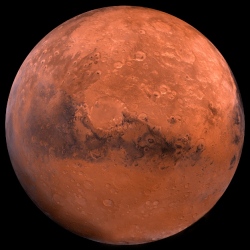
Curiosity rover has measured a tenfold spike in methane, an organic chemical, in the atmosphere around it and detected other organic molecules in a rock-powder sample collected by the robotic laboratory’s drill."This temporary increase in methane, sharply up and then back down, tells us there must be some relatively localized source,"
Researchers used Curiosity’s onboard Sample Analysis at Mars (SAM) laboratory a dozen times in a 20-month period to sniff methane in the atmosphere. During two of those months, in late 2013 and early 2014, four measurements averaged seven parts per billion. Before and after that, readings averaged only one-tenth that level.
Organic molecules, which contain carbon and usually hydrogen, are chemical building blocks of life, although they can exist without the presence of life. Curiosity’s findings from analyzing samples of atmosphere and rock powder do not reveal whether Mars has ever harbored living microbes, but the findings do shed light on a chemically active modern Mars and on favorable conditions for life on ancient Mars.
"We will keep working on the puzzles these findings present," said John Grotzinger, Curiosity project scientist of the California Institute of Technology in Pasadena. "Can we learn more about the active chemistry causing such fluctuations in the amount of methane in the atmosphere? Can we choose rock targets where identifiable organics have been preserved?"
Researchers worked many months to determine whether any of the organic material detected in the Cumberland sample was truly Martian. Curiosity’s SAM lab detected in several samples some organic carbon compounds that were, in fact, transported from Earth inside the rover. However, extensive testing and analysis yielded confidence in the detection of Martian organics.
Identifying which specific Martian organics are in the rock is complicated by the presence of perchlorate minerals in Martian rocks and soils. When heated inside SAM, the perchlorates alter the structures of the organic compounds, so the identities of the Martian organics in the rock remain uncertain.
"This first confirmation of organic carbon in a rock on Mars holds much promise," said Curiosity Participating Scientist Roger Summons of the Massachusetts Institute of Technology in Cambridge. "Organics are important because they can tell us about the chemical pathways by which they were formed and preserved.
In turn, this is informative about Earth-Mars differences and whether or not particular environments represented by Gale Crater sedimentary rocks were more or less favorable for accumulation of organic materials. The challenge now is to find other rocks on Mount Sharp that might have different and more extensive inventories of organic compounds."
